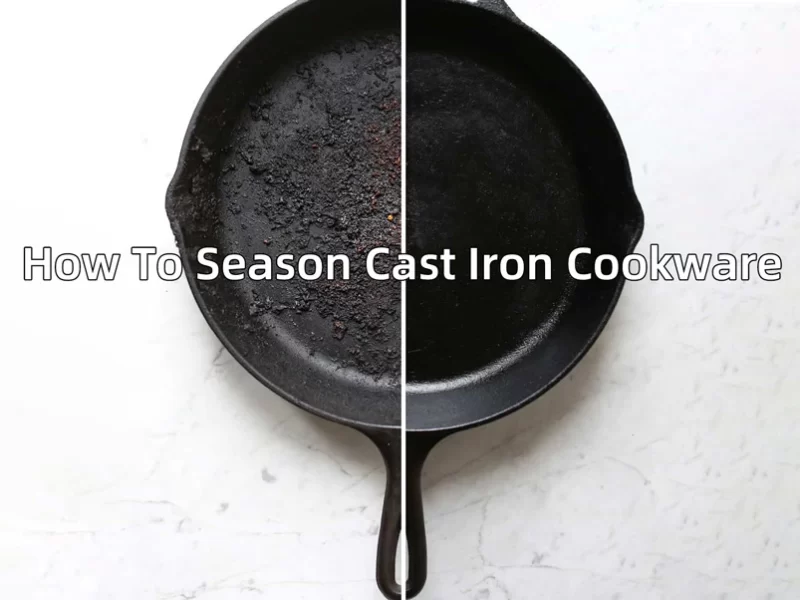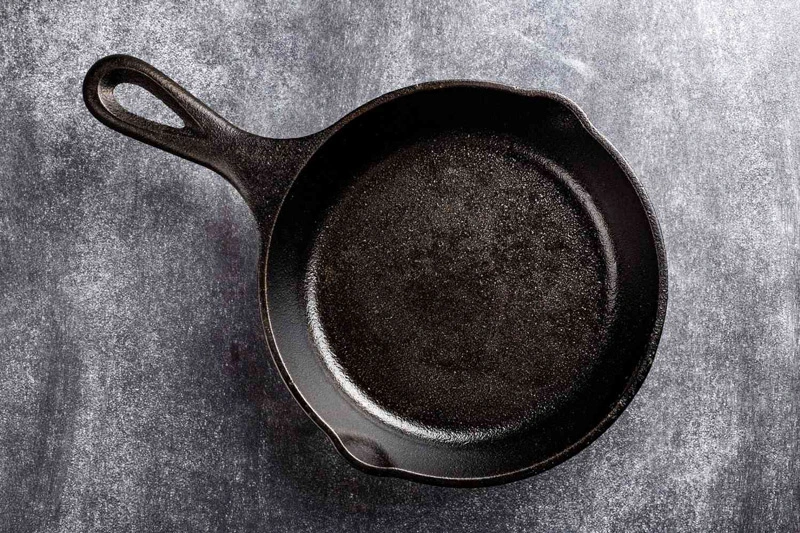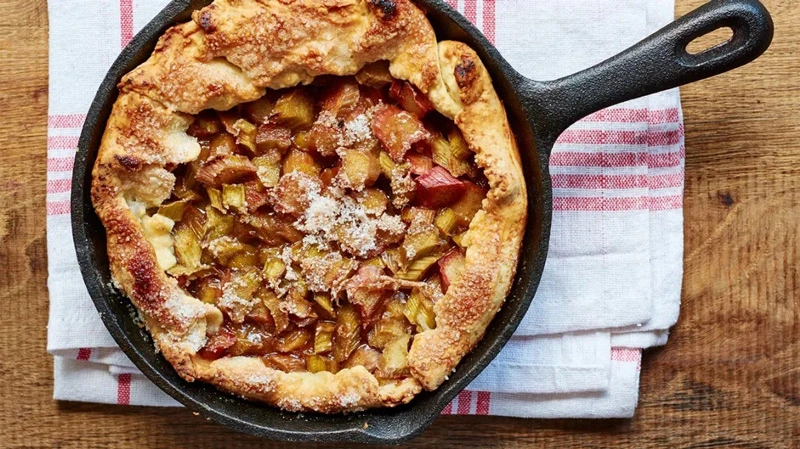
を使用する場合 鋳鉄調理器具 長期間使用していると、表面が錆びたり腐食したりすることがあります。調理した食品は本来の風味を失う。調理器具を良い状態に保つための適切なメンテナンスがされていないため。

シーズニングとは何か?
まず、シーズニングとは、鋳鉄製調理器具の表面を重合油脂でできた焦げ付きにくいコーティングで処理すること。これにより、調理中に鍋の表面にこびりつくのを防ぐことができる。また、食材の風味を損なわないだけでなく、お手入れをより便利で手早くすることができます。
なぜ鋳鉄製の調理器具にはシーズニングが必要なのか?
鋳鉄の材質 調理器具水や空気に触れると、ステンレス製の調理器具よりも強い酸化反応を起こし、サビが発生する。そのため、シーズニングは錆の反応を遅らせ、調理器具の寿命を延ばし、家庭用台所用品のコストを下げるために必要である。さらに重要なことは、鋳鉄製調理器具を最大限に活用することである。
よくシーズニングされた鋳鉄鍋(油をこすりつけて繰り返し加熱したもの)は、油が分解してプラスチックのような物質になり、鋳鉄鍋の表面に接着します。この油の層が、シーズニングされた鋳鉄に焦げ付きにくい性質を与えているのです。重合した油のパティナは、金属本来の気孔にしっかりと閉じ込められています。
味付け 鋳鉄調理器具 は黒い光沢があり、とても滑らかです。適切に使用することで、時間が経つにつれて黒く滑らかになり、より自然にこびりつきにくくなる。
この重合したグリスの層は、空気中の酸素が調理器具の表面素材と反応するのを妨げ、錆を防ぐノンスティック・コーティングを実現する。

鋳鉄製調理器具のシーズニング方法に関するステップ・バイ・ステップ・ガイド.
以下のものを用意する必要がある。 キッチンツール:
- 洗浄剤
- 植物油または菜種油
- クリーニングクロス
- キッチン掃除用スポンジ
- ペーパータオル
鋳鉄のフライパンを例に挙げる:
ステップ1:新しい鋳鉄製調理器具をきれいにする
フライパン全体をぬるま湯と洗剤でこすり、こびりつきやサビを落とします。ステンレスたわしでこすらないように注意し、スポンジブラシを使うとよいでしょう。洗浄後は水分を拭き取り、乾燥させておく。
ステップ2:植物油またはキャノーラ油を塗る
最初の方法:ガスコンロでフライパンを熱し、フライパンの表面または上面に植物油またはキャノーラ油を塗る。ペーパータオルを使って、フライパンの表面または上面に薄く油を均等に塗る。縁と側面にも薄く油を塗る。さらに10~15分ほど放置し、油を焦がさないように注意する。焦げ付いても慌てず、もう一段油を塗って加熱を続ける。
二つ目の方法:まず、オーブンを350~375°Fに予熱し、フライパンの表面にまんべんなく油を敷く。
オーブンを予熱した後、フライパンに塗った油が流れるので、フライパンに油がたまらないように、フライパンを逆さまにしてオーブンラックの上に置く。このとき、フライパンの下にアルミホイルやオーブン皿などを敷いて、油がオーブンに垂れないようにする。フライパンを1時間ほど焼いたら火を止め、冷めるのを待ってから取り出す。

ステップ3:シーズニングポットの洗浄
シーズニングの後、鍋の表面には保護層が形成されている。まずは表面の余分な不純物を取り除くために洗浄し、それから通常の調理を行う必要がある。
シーズニングはどのくらいの頻度で行うべきですか?
新しいフライパンを初めてシーズニングしたら、調理のたびにシーズニングする必要はありません。ほとんどの食材はフライパンの表面に影響を与えません。ただし、酸味のある食品や硬い皮の食品など、ノンスティック加工のコーティングを傷める食品もあります。フライパンがくすんできたり、サビが目立ったり、洗いすぎたりしたら、シーズニングをやり直すことをお勧めします。ほとんどの場合、油を薄く塗るだけで調理面のシーズニングは完了です。ここでは、最初のシーズニングを終えたフライパンのシーズニングのタイミングと方法をご紹介します。
- 初めてフライパンを使うときは、調理の前にしっかりとシーズニングすること。
- 表面のノンスティック加工が磨耗していることに気づいたら。表面に食べかすがたくさんこびりついている場合は、再シーズニングをご検討ください。
- 酸性の強い食品を調理した後。酸性の強い食品は、そうでない食品よりも早く調味料を傷めます。酸性の食品を2~3回調理したら、再度味付けをする。
- 10~12回使用したらフライパンの定期的なお手入れの一環として、何度も使用した後はしっかりとシーズニングをしましょう。酸味の強い食材を調理しなくても、時間が経てばシーズニングは落ちてしまいます。定期的なお手入れとシーズニングをすることで、フライパンのコンディションを保つことができます。
使用後のお手入れ方法は?
お手入れの手順は、一般的な鍋と同じです。ノンスティック加工が施されていない鍋やステンレス製の調理器具(ステンレス製調理器具の洗浄とメンテナンスについてはこちらをご覧ください。)、すすぎやこすり洗いの際にステンレスウールを使うと、コーティングを傷めやすくなるので注意が必要です。水洗い後は水垢を拭き取り、風通しの良い場所で自然乾燥させる必要があります。その後、不定期に一度シーズニングを行う。

結論
これまでは 鋳鉄メーカー は、お客様の鋳鉄フライパンのプレシーズニングをお手伝いします。しかし、鋳鉄製のフライパンの焦げ付きにくさをより確実にし、その後のメンテナンスも向上させるには、やはりシーズニングの方法を学び、運用する必要がある。

